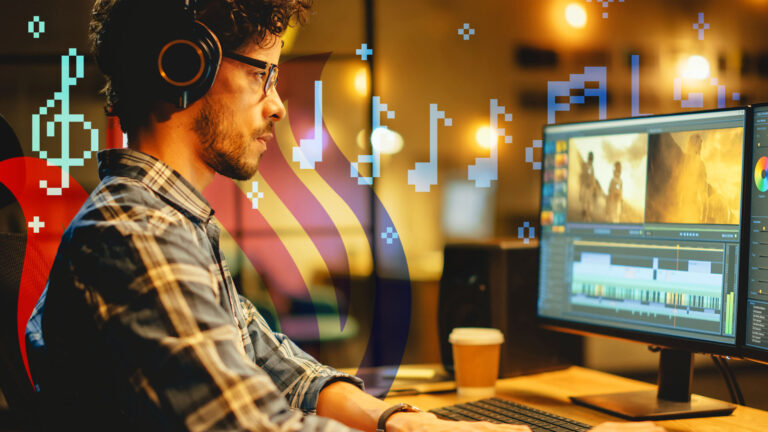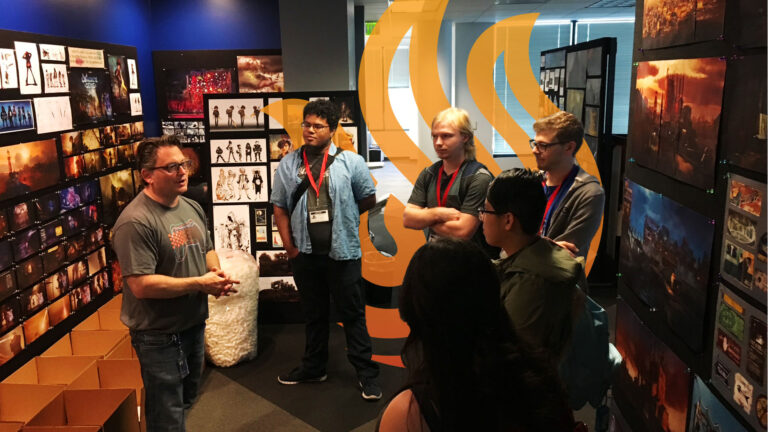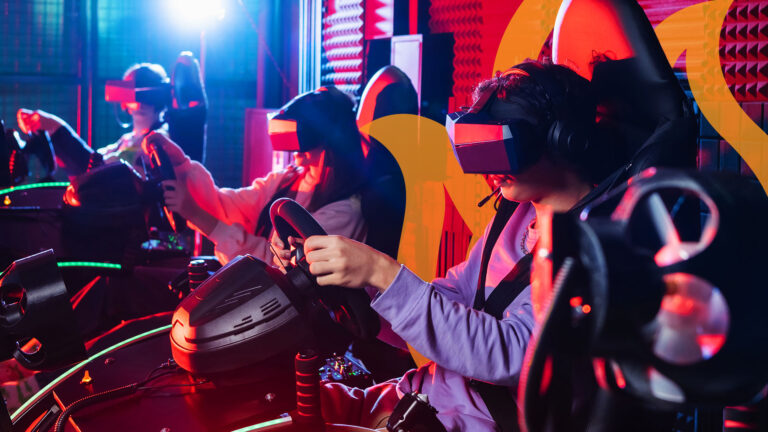Since the advent of 3D graphics, video gaming and feature films have been slowly merging into one. The 3D space meant characters and objects would appear solid and thus were able to present themselves in a cinematic manner. 1998’s Metal Gear Solid took this to the next level by splicing the gameplay segments with cutscenes, or short films created within the game engine itself. While several older games had cutscenes, Metal Gear Solid took full advantage of the 3D models to deliver an experience very similar to one you would expect in theaters.
The game’s director, Hideo Kojima, would explain in interviews that he saw a future where gaming and feature films would become one. He chose the title Metal Gear Solid as a reference to how the inclusion of solid models in video games allows for cinematic camera angles and other techniques used by film directors. Years later, it appears that Kojima was correct. Many modern video games incorporate long cutscenes and other narrative-focused design decisions. It isn’t far off to refer to some titles as interactive movies.
However, the merge of video gaming and feature films isn’t just about how to present the final product. Many games and movies are now created with the same tools. Video gaming engines are the software traditionally used by game designers to create their fully interactive worlds. But now, film directors are turning to game engines to make movies during the coronavirus pandemic. Since the working world has been changed so much by the virus, creative remote solutions must be leveraged to bring dreams to life.
The Impacted of COVID-19 on Feature Films
Before the outbreak, feature films were produced on a set filled to the brim with technical staff and crew members. Although there are usually only a few characters on the screen during any given movie, filming still requires many people to bunch together in small spaces. With social distancing guidelines in place, this makes it difficult to produce films in that original way. Many film studios have even been forced to shut down due to shelter in place orders. Since there are far fewer travel opportunities available, film studios have needed to continue production digitally.
Thanks to the power of CGI, movies can now be created entirely in the digital realm. This is a huge victory if you plan to keep making movies during the coronavirus, and after the pandemic is over and you want to save millions on production costs. Video game engines already have the horsepower necessary to bring believable CGI to life. Many directors are now utilizing these software tools to get their production back up and running. Additional software can then be used for video communications and logging every change made inside the game engine. All of these tools combine flawlessly to allow the staff to work remotely the entire time.
How Does a Gaming Engine Work?
A video game engine allows coders, level designers, 3D modelers, animators, environmental artists, and everyone else on a game development team to create the worlds gamers explore when playing the final version of a game. A gaming engine allows for all of the character models, environments, and other props to be created in a 3D space. Once everything is placed, the models can be animated to create all of the interactions necessary to facilitate a believable world.
In addition to playable levels, cutscenes and other cinematics are often created in the engine as well. This is where the film industry comes in. Instead of making an interactive experience with cutscenes mixed in, directors can make a feature film by having a series of cutscenes only. Each scene is then edited into the proper order just how a live-action movie would be put together. Since graphics technology has become so advanced over the years, it takes a moment before you spot the difference between a CGO render and a real-life image.
Motion Capture and Hollywood Actors
Since games have become more cinematic, the old method of having 3D animations done by hand has declined in popularity. To tell the best stories possible, game directors have begun to hire Hollywood actors to play the roles of the main characters. These highly trained professionals have their performance immortalized in the game engine through the use of motion capture technology.
Motion capture, or Mocapping, is the process of suiting up actors in front of a green screen. The suits worn by actors have hundreds of tiny sensors that dot the entire outfit. These sensors capture the minute details of each movement the actor performs. Advanced Mocapping involves placing sensors on an actor’s face as well. Face sensors can capture the facial expressions of each actor to bring more emotional nuance to the digital performance.
However, the process of getting actors into a digital project doesn’t end there. The animation team often takes a final look at each character’s movement and adds more detail by hand when necessary. These final touches help provide the best possible experience for the player or audience.
Why are Video Games Attempting to Emulate Film?
You may be wondering to yourself why gaming companies are trying their hardest to make their titles look just like Hollywood feature films. There are two primary reasons why this phenomenon has swept across most of the industry. The rise of hype culture and the ability to reach a wider audience drives game makers to push the cinematic envelope wherever possible.
Hype-fueled marketing
Massive waves of excitement sweep over fans in the years and months leading up to a game’s release. The hype is a huge moneymaker for publishers, platform owners, and game studios alike. One of the best ways to hype up the audience is to show off gameplay that looks highly engaging and graphically impressive. Cinematography and a film like presentation is a great way to display high fidelity to the audience.
The chance to reach a broader audience
In addition to existing gamers, companies like to appeal to everyone who don’t know they love interactive stories yet. Making games more cinematic allows them to grab the attention of those who wouldn’t normally take a second look. Cinematic games also have easier gameplay than games that have a heavy reliance on quick reflexes and split-second decisions. Games and movies are quite different since games have an interactive element. The interactivity can sometimes be a barrier to players who don’t have the skill to get past a particular challenge.
When watching a feature film, you will always get through to the end as long as you don’t pause the film. When gaming, you need to overcome the obstacles presented to you before you can move on. There are no guarantees that a person will be able to finish a video game. One of the main reasons games are becoming more cinematic is so that developers can make them easier while still keeping them interesting. An easier game is one that more people will be able to enjoy and finish.
Why are Films Becoming More Like Video Games?
Movies have also begun to resemble video games. The most notable example of this is the cavalcade of licensed films that attempt to adopt popular game titles. But movies have been inspired by video games and incorporate elements from them all the time. This is due to the tendency for Hollywood to chase trends and the director’s own passion for gaming.
Hollywood trends
Video games make more gross revenue each year than movies, TV, and music combined. This popularity has commanded the attention of Hollywood film studios in recent years. Funding movies is a risky investment and people with the money want to mitigate as much of that risk as possible. The best way to increase a movie’s chance of success is to make it based on current trends and hot topics. This dramatically increases the likelihood that audiences will buy tickets or stream it digitally.
Director passion
Now that video games have been around for several decades, many feature film directors have grown up playing them throughout their childhood. Some directors still play games and share their passion regularly online. This interest and enthusiasm can lead to movies that have gaming references or elements baked in.
Virtual film sets
Game engines can be leveraged to create completely virtual film sets. This is a great way for directors and producers to work together while social distancing. Cameras can be placed inside a game engine the same way as any other object. These cameras can then be set up just as they would on a live set. Programmers can then ensure that they cut, pan, rotate, and zoom just like regular cameramen would while filming. Next, light sources can be used to emulate the studio lighting directors are used to. It is possible to create everything needed to start filming with a few clicks.
Making Feature Films After the Coronavirus is Over?
There is speculation that suggests film production will never be the same after COVID-19. Considering how every aspect of movie making has been altered during the pandemic, it makes sense to assume some changes will be permanent. The biggest thing film studios will realize is how much money they are saving by making their films in game engines.
The cost of production has gone down considerably since the pandemic. There is no longer a need to pay for people traveling to work each day. The amount of staff behind the scenes can be reduced considerably and they will no longer need to order catering services. The reduced crew and use of game engines will also lower the need to buy equipment. Once this is all over, film studios and their investors won’t want to go back to the old expensive ways.
Lowering the budget will also be necessary for a short while after the pandemic. Not only have profits slowed to a crawl during the virus, but moviegoers may not want to rush back into theaters after things settle down. Since it may take several years for consumer confidence in movie theaters to rise, film studios will need to cut costs to stay in business.
Final Thoughts
It is only a matter of time before all movies have an interactive element. As both games and movies evolve with their audiences, it will lead to unique experiences that blend both mediums in ways you can’t even imagine yet. The use of Hollywood actors in games, the leveraging of game engines to create films, and the converging of both types of fans are all indicators of this inevitable future of the entertainment industry. While this has been a slow transition since the 90s, the coronavirus pandemic will undoubtedly manifest this reality much sooner.
Have a passion for making video games and enjoy watching feature films? Learn how to use gaming engines to make feature films. As the video game industry continuously grows, employers are zeroed in on game design and development program students who understand both the creative and technical sides of the industry. Nowhere is University of Silicon Valley’s unique ability to combine specializations better demonstrated than in our Game Design & Development Department.
In the Game Design Art degree concentration, your studies will include the foundation of game design mechanics, gameplay principles, interactivity, and the means for creating and refining game content. Building on that foundation, as well as the technical aspects of 3D animation software and game engines, you will create visually impressive gaming environments that tell meaningful stories, convey thoughtfulness, create emotion and are just all-around fun to play. The Game Art degree concentration is all about designing, creating, and bringing to life the visual components of games in a highly collaborative teaching environment that simulates a working studio.
University of Silicon Valley is uniquely poised to offer a meaningful and valuable education for 21st century students. We believe in an education that directly correlates with the work you’ll be doing after you graduate. Interested in learning more? Contact Us today.


